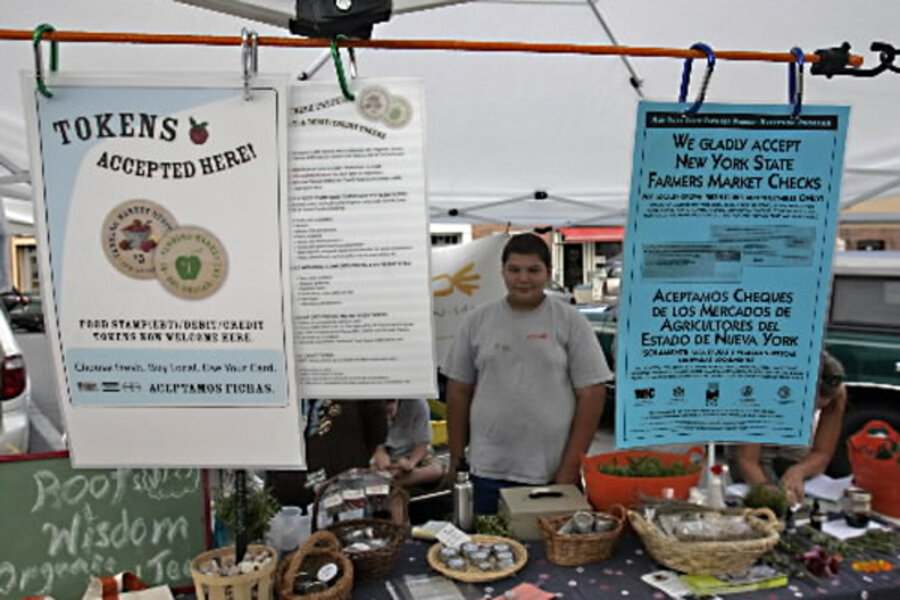Good news: Anti-poverty programs actually reduce poverty
Loading...
In 1998, when I was Deputy Assistant Secretary for Tax Analysis at the Treasury Department, I asked my staff expert on the Earned Income Tax Credit (EITC) how many people the EITC had lifted out of poverty. Her answer shocked me: technically, zero. Poverty statistics don’t account for the EITC or any other federal anti-poverty measure. Prior to today, the government could have given every poor household in the country $25,000 and the poverty measure wouldn’t have budged.
It’s indeed ironic that a measure originally created in 1963 to track progress in alleviating poverty ignored the effect of those programs on families’ economic well-being. In 1963, it might have sort of made sense since the big anti-poverty programs were yet to be enacted. In 2011, it doesn’t. As poverty expert Rebecca Blank said in her presidential address for the Association of Public Policy and Management in 2008:
It is not too strong a statement to say that… the poverty thresholds are nonsensical numbers. They are based on data from 1955 and do not reflect any information related to current expenditures or needs. (Emphasis added.)
Now Becky is the top economist at the Commerce Department so it’s perhaps not surprising that today the Census Bureau (part of Commerce) announced a new supplemental poverty measure (SPM) that has better measures of both economic resources and living costs. A very nice article by Kathleen Short describes the new measure.
In addition to cash income, the new measure includes the EITC, supplemental nutrition assistance (food stamps), other nutrition assistance (school lunch program and WIC), and housing and energy subsidies. On the debt side are taxes (most notably, payroll taxes), work-related expenses including child care, medical out-of-pocket expenses, and child support payments.
The new poverty thresholds also attempt to measure living expenses more accurately. The original measure simply multiplied the cost of a subsistence food budget by 3 on the theory that, in 1955 (the year for which the original data were collected), food averaged about 1/3 of the typical household’s budget. The SPM is based on actual costs for food, clothing, shelter, and utilities. And there are geographic adjustments to account for the fact that it costs more to live in Manhattan than in Syracuse (for example) and more accurate adjustments for family size.
The overall estimate of the number of people in poverty actually increases as a result of all of these changes. While child poverty in 2010 declines from 16.8 million in the official measure to 13.6 million in the SPM, poverty rates among working age adults and the elderly increase by almost 6 million people. The poverty rate among seniors (15.9%) is actually slightly higher than among those aged 18 to 64 (15.2%) reflecting the fact that medical expenses increase dramatically in old age and older people usually don’t qualify for the largest cash assistance programs. Under the official measure, seniors have the lowest poverty rate at 9.0%.
The new measure shows that—drumroll please—anti-poverty programs actually reduce poverty. The EITC does more to reduce poverty than any other cash assistance program, reducing the number of people in poverty by over 6 million (and 3 million kids). Food stamps come in a close second, at 5 million. The other subsidies are all under 3 million. Payroll taxes (FICA) and work expenses (primarily childcare) both add to the economic hardship of low-income people, each adding 4-5 million people to the poverty rolls. But the biggest hit to the economic well-being of the poor comes from unreimbursed medical expenses, which add a whopping 10 million people to the total. This suggests that health reform could have a very significant effect on the poverty rate—by expanding access to Medicaid and private health insurance for the poor and near poor and by closing the “donut hole” in Medicare’s prescription drug coverage.
Effect of Specific Adjustments to Income on Poverty Counts, 2010, in Millions |
||||
| Age Group | ||||
| All | Under 18 | 18-64 | 65+ | |
| EITC | -6.1 | -3.1 | -2.9 | -0.1 |
| SNAP (food stamps) | -5.2 | -2.2 | -2.5 | -0.4 |
| Housing subsidy | -2.8 | -1.0 | -1.3 | -0.5 |
| School lunch | -1.2 | -0.6 | -0.4 | 0.0 |
| WIC | -0.3 | -0.1 | -0.2 | 0.0 |
| LIHEAP (energy assistance) | -0.3 | -0.1 | -0.2 | 0.0 |
| Child support paid | 0.3 | 0.1 | 0.4 | 0.0 |
| Federal income tax before credits | 1.2 | 0.2 | 1.0 | 0.1 |
| FICA | 4.3 | 1.4 | 2.9 | 0.1 |
| Work expense | 4.6 | 1.5 | 2.9 | 0.1 |
| Medical out-of-pocket expenses | 10.1 | 2.1 | 5.4 | 2.9 |
| Number of People in Poverty | 49.1 | 13.6 | 29.2 | 6.2 |
Source: Census Bureau and my calculations
Of course, this is still the alternative poverty measure. The official measure will continue to be used to determine program eligibility. But, just as CBO’s “alternative fiscal scenario” is the most accurate measure of our deteriorating fiscal health, the alternative poverty measure provides a much clearer picture of poverty and the effect of programs aimed at mitigating it.
By any measure, poverty in the US is too high, but it’s nice to finally have a semi-official measure that recognizes that anti-poverty programs raise the living standards of poor people.
Follow me on twitter.
This was originally posted on The Impertinent Economist blog.





